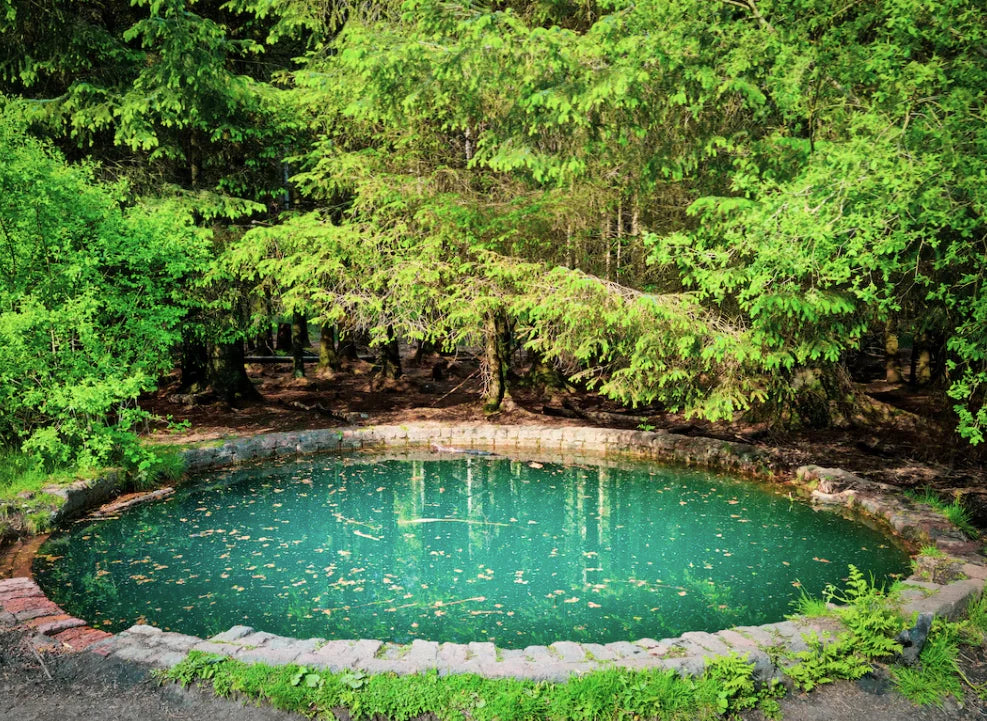A pond liner is an impermeable material that is used to contain water in a pond or water feature. It acts as a barrier between the ground and the water, preventing any leakage and ensuring that the pond maintains its desired shape and depth. Pond liners come in various materials, such as PVC, EPDM rubber, and Butyl rubber. Each material has its own set of advantages and disadvantages, which will be discussed in detail later on.
The main purpose of a pond liner is to prevent water loss, which can lead to a multitude of issues, such as soil erosion, water waste, and damage to the surrounding ecosystem. A good pond liner should be durable, flexible, and easy to install, ensuring that your pond stays in tip-top shape for years to come.
What is the best pond liner to use? Here's what you need to know.

The Importance of Choosing the Right Pond Liner
Choosing the right pond liner is crucial for the overall health and longevity of your pond. A high-quality liner will ensure that your pond remains watertight and maintains its shape over time. The wrong liner, on the other hand, can lead to leaks, water loss, and even damage to the surrounding environment.
In addition to providing a watertight barrier, pond liners also play a vital role in the overall aesthetics of your pond. A well-chosen liner will blend seamlessly with the natural surroundings, creating a beautiful and cohesive water feature that enhances the overall appeal of your outdoor space.
The right pond liner can save you time, money, and effort in the long run. A durable and long-lasting liner will require less maintenance and fewer replacements, allowing you to enjoy your pond without the constant worry of leaks and repairs.
Common Pond Liner Materials and Their Drawbacks
There are several different materials commonly used for pond liners, each with its own set of advantages and disadvantages.
PVC Liners
PVC, or polyvinyl chloride, is a popular material for pond liners due to its affordability and ease of installation. However, PVC liners can become brittle and prone to cracking over time, especially when exposed to sunlight and fluctuating temperatures. This can lead to leaks and the need for frequent repairs or replacements.
EPDM Rubber Liners
EPDM, or ethylene propylene diene monomer, is a type of synthetic rubber that is highly resistant to weathering and UV radiation. While this material is more durable than PVC, it can still be prone to punctures and damage from sharp objects or burrowing animals. Additionally, EPDM liners are typically heavier and more difficult to install than other materials.
Butyl Rubber Liners
Butyl rubber liners are similar to EPDM liners in terms of durability and resistance to weathering. However, they can be even more challenging to install due to their weight and lack of flexibility. Additionally, butyl rubber liners tend to be more expensive than other materials, making them a less budget-friendly option.
What is Liquid Rubber?
Now that we've discussed the common pond liner materials and their drawbacks, let's move on to the star of the show: liquid rubber. Liquid rubber is a water-based, elastomeric coating that can be applied to a variety of surfaces, including concrete, metal, and wood. Once applied, it cures to form a seamless, flexible, and highly durable membrane that is resistant to weathering, UV radiation, and chemicals.
The unique properties of liquid rubber make it an ideal choice for pond liners. Its flexibility allows it to conform to the shape of your pond, creating a custom-fit liner that is both watertight and visually appealing. Additionally, its high durability ensures that your pond liner will remain in excellent condition for many years to come.

Benefits of Liquid Rubber as a Pond Liner
There are several reasons why liquid rubber is the ultimate pond liner choice:
-
Seamless and Leak-Proof: Liquid rubber liners form a seamless, continuous membrane that is free of joints or seams, making it virtually leak-proof.
-
Highly Durable: Liquid rubber liners are resistant to weathering, UV radiation, and chemicals, ensuring a long-lasting and low-maintenance pond liner solution.
-
Flexible and Easy to Install: Liquid rubber can be easily applied to any shape or size of pond, allowing for a custom-fit liner that is both watertight and visually appealing.
-
Eco-Friendly: Liquid rubber is a water-based, non-toxic material that is safe for use in ponds and other aquatic environments.
-
Cost-Effective: Liquid rubber liners are a cost-effective solution compared to traditional pond liner materials, as they require less maintenance and fewer replacements over time.
How to Apply Liquid Rubber for Pond Lining
The process of applying liquid rubber for pond lining is relatively simple and can be completed by most DIY enthusiasts:
-
Prepare the Pond Surface: Begin by cleaning the pond surface of any debris, dirt, or loose material. Ensure that the surface is smooth and free of any sharp objects that could puncture the liner.
- Apply Primer: For concrete, wood and PVC choose our Liquid Rubber Multi-purpose Primer. For EPDM Liners choose our Liquid Rubber EPDM Primer.
-
Apply the Liquid Rubber: Using a roller or brush, apply a generous and even coat of liquid rubber to the pond surface. Be sure to cover all areas, including any corners or crevices.
-
Allow to Cure: Allow the liquid rubber to cure for at least 24 hours, or until it is no longer tacky to the touch. During this time, avoid walking on or disturbing the liner.
-
Inspect and Touch Up: Once the liquid rubber has fully cured, inspect the liner for any areas that may require additional coats or touch-ups. Apply additional liquid rubber as needed to ensure a seamless and watertight liner.
Liquid Rubber vs. Other Pond Liner Materials
As we've discussed, there are several pond liner materials available on the market, each with its own set of advantages and disadvantages. When compared to other materials, liquid rubber stands out as the ultimate pond liner choice due to its superior durability, flexibility, and ease of installation.
Unlike PVC and EPDM liners, liquid rubber is not prone to cracking, punctures, or damage from burrowing animals. This means less maintenance and fewer replacements, saving you both time and money in the long run. What's more, the seamless nature of liquid rubber liners ensures a watertight and leak-proof pond, something that can be difficult to achieve with traditional materials.
Why Liquid Rubber is the Ultimate Pond Liner Choice
Liquid rubber is the ultimate pond liner choice due to its unique combination of durability, flexibility, and ease of installation. Its seamless and leak-proof nature ensures a watertight and visually appealing pond that requires minimal maintenance and lasts for years to come.
So, the next time you're faced with the question, "What is the best pond liner to use?," look no further than liquid rubber. Its numerous benefits and eco-friendly properties make it the clear winner in the world of pond liners. And now that you've discovered the secret to a perfect pond, it's time to bring your dream water feature to life!
Buy Liquid Rubber Neopond Sealant Today
Liquid Rubber Neopond Sealant is a cost-effective way to stop leaks in your pond for many years and is easy enough to use that you won't have to pay someone else to fix your pond. Liquid Rubber Neopond Sealant is water-based, non-toxic, solvent-free and safe for plants and fish. Because there are no harsh fumes, it's safe to use around kids and pets. Find out how Liquid Rubber Neopond Sealant can help you repair leaks and waterproof your backyard pond or ornamental water feature. Shop now and join the loyalty program.




